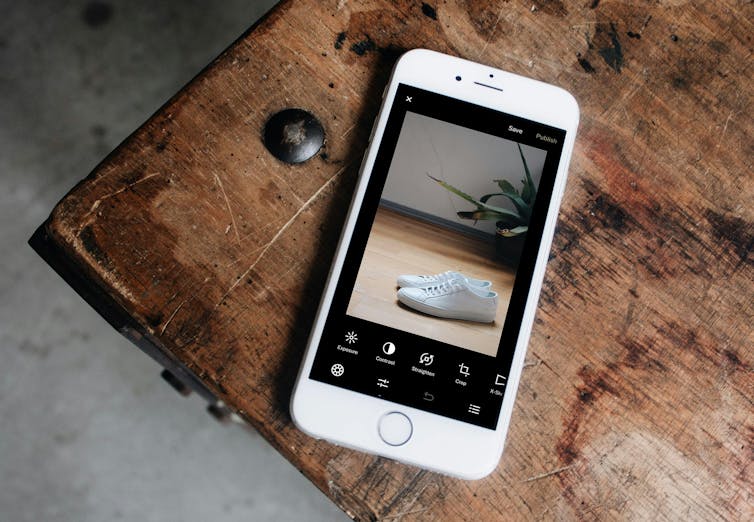Blog
Paying folks to train may be motivating, however the monetary rewards do not acquire to final eternally to be efficient
If bodily exercise got here in a bottle, it could be probably the most generally prescribed medication ever. Simply ten minutes extra strolling a day may be profitable clinically important Outcomes similar to improved psychological well being, lowered ache and higher sleep. It may well additionally encourage carry out greater than stop and handle 100 power ailments similar to most cancers, arthritis and diabetes.
And but many individuals carry out not take pleasure in a diminutive extra train – snort 10 extra minutes of strolling a day or 1,000 further steps.
There are numerous digital options to encourage folks obtain bodily exercise objectives, similar to health apps like MyFitnessPal and Noom. Sadly, the challenges are… develop wholesome habits persists, and health app spend might topple into a well-recognized sample that displays this Issue reaching novel health objectives.
For apps, it might survey one thing like this: The app is downloaded with the perfect of intentions and used for a couple of weeks. Steadily, the app turns into uncared for and begins accumulating mud on the smartphone display screen. Ultimately it’s deserted or deleted.
Encouraging exercise
As a bodily exercise skilled, my life’s mission is to encourage extra folks to be energetic extra usually. A hunch lastly led me to discover the concept of truly paying folks to train PhD analysis. This began in 2010 with a small group of coronary heart sufferers.
Nearly 15 years later, it seems that this concept – paying folks to train – is profitable.
(Shutterstock)
Governments And Firms For instance, folks everywhere in the world acquire been paying to train for years. And it really works! One way or the other. Within the quick time periodat the least.
Predictably, paying folks to train can turn into fairly costly when applied at a inhabitants stage, which is a important limitation. I skilled this limitation first hand throughout improvement Carrot rewards App in collaboration with Canadian federal and provincial governments from 2016 to 2019.
In 2019, the monetary rewards for train provided to Canadians by Carrot Rewards for over a 12 months had been largely discontinued in Ontario (Canada’s largest province) as a consequence of some tax constraints, however not in British Columbia and Newfoundland and Labrador (the opposite two Canadian provinces during which). the app was accessible).
This pure variation in publicity to monetary rewards led to an spellbinding behavioral experiment that provided the chance to retort the query: Can monetary rewards be largely lowered with out negatively affecting bodily exercise?
Elimination of economic rewards
In our giant examine Of 584,760 customers of the Carrot Rewards app, my colleagues and I discovered that enhancements in bodily exercise (about 1,000 steps per day, or 10 extra minutes of strolling) in Ontario largely endured after monetary rewards wore off. This was a outstanding realization, particularly for a few years Psychology analysis instructed the other; that individuals return to their primary conduct, their “veteran habits,” as quickly as monetary rewards diminish.
One purpose for this will likely be that rewards for each day bodily exercise achievements had been offered over a 12 months earlier than withdrawal started, which is seemingly enough time for this to happen Behavior formation.
Perhaps it is as a result of the Carrot Rewards app rewards reaching practical and adaptable bodily exercise objectives – which increase self-confidence – with micro-rewards price nearly $0.05 per day.
Others acquire discovered that rewards are so small US$0.09 per day acquire elevated bodily exercise in additional managed medical trial settings.
Apply rewards

(Le Buzz Studio/Unsplash)
What does this imply for these whose health apps gather mud on their residence screens?
In abstract, this novel analysis suggests that individuals might have the ability to hold a quick dose of economic reward to enhance their bodily exercise, and as soon as that exercise is established (often it takes approx six to 12 months), it could be sustained in the long run with considerably more cost effective monetary reinforcement.
So if somebody is fascinated with this strategy, it could fabricate sensible sense to survey for monetary rewards for train – as a nudge, as an impetus, as a spark.
Some governments acquire cell well being applications primarily based on monetary rewards, similar to England And Australia. Employers can supply monetary rewards as piece of their prolonged well being advantages, which is frequent apply within the EU United States
If none of those choices are accessible, there are commercially accessible health apps primarily based on monetary rewards Sweatcoin or A lot better. With Sweatcoin, by reaching objectives you obtain cash that may be redeemed for business merchandise in Sweatcoin’s on-line store. With WayBetter, you deposit a portion of your individual cash and pick up it again, plus a portion while you attain your objectives.
Whereas monetary rewards might not be helpful for everybody, our analysis and that of others more and more means that they may very well be a strategy to encourage and maintain a extra energetic way of life.

